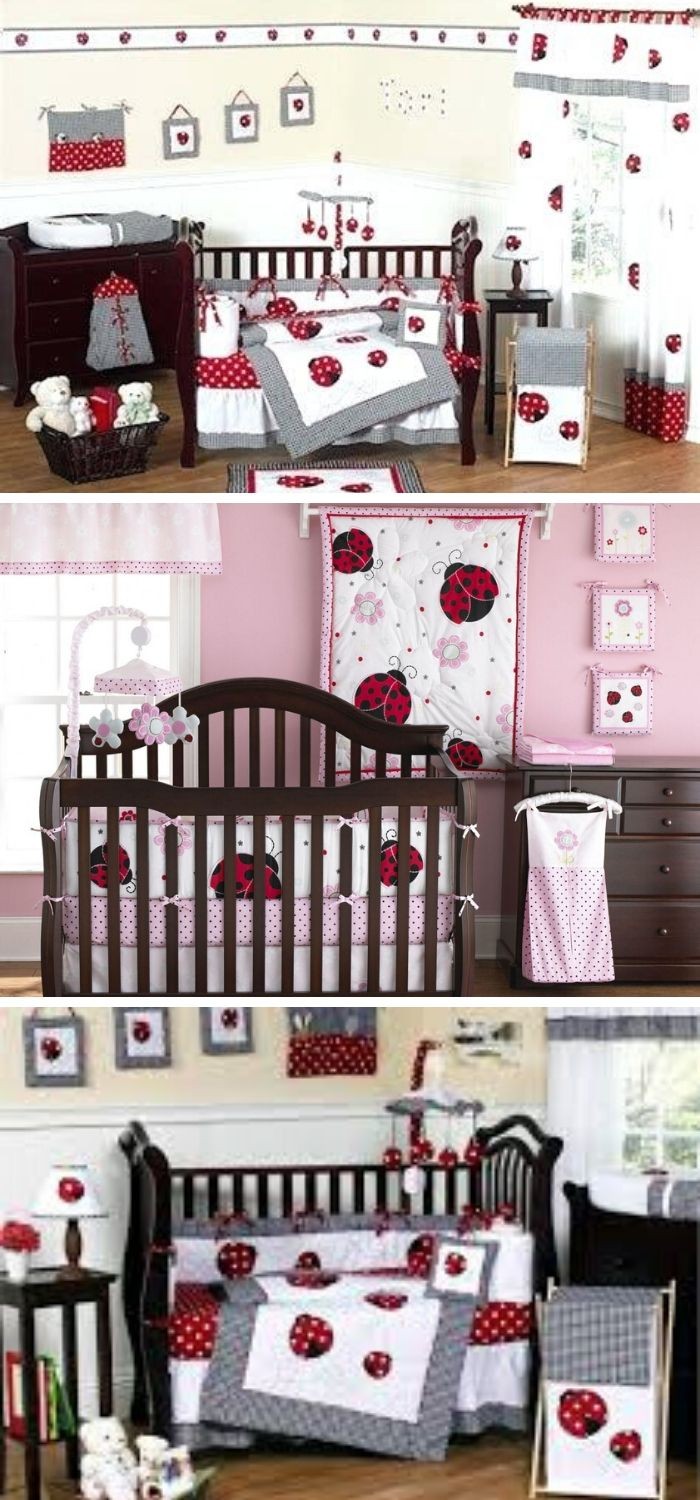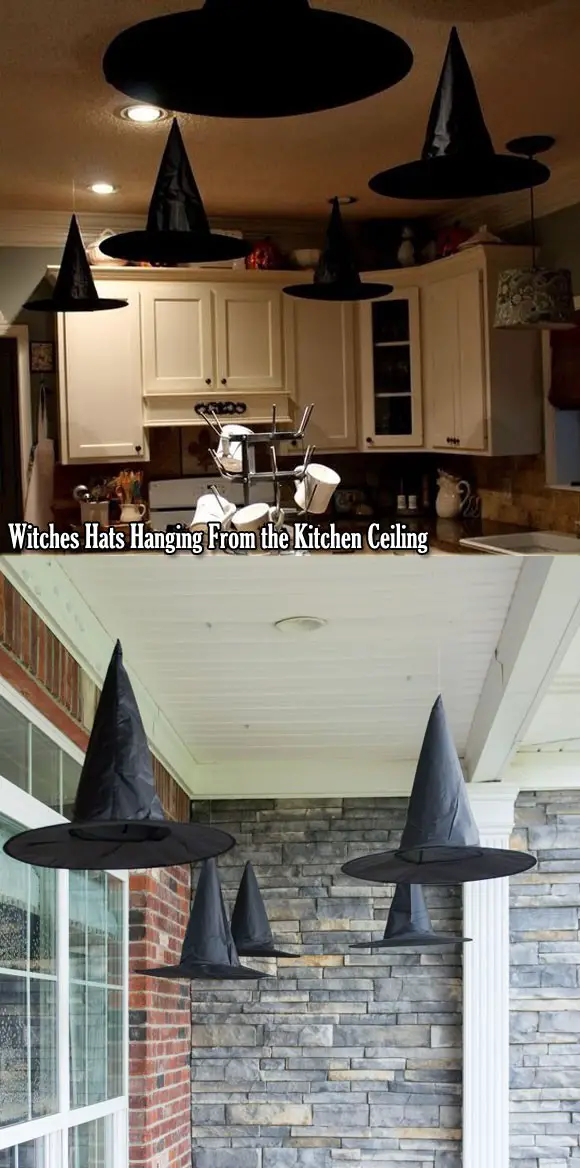16 Most Dangerous Neighborhoods In Baltimore
Baltimore, a city with a notorious reputation for crime, is comprised of various neighborhoods that differ significantly in terms of safety. As you plan your visit or navigate daily life within the city, it’s crucial to be aware of the areas that pose a higher risk. In this article, we’ll delve into the 16 most dangerous neighborhoods in Baltimore, providing valuable insights into crime rates and prevalent offenses.
Our goal is to empower readers with the knowledge they need to stay safe while exploring or residing in Baltimore.
The 16 Most Dangerous Neighborhoods in Baltimore
Berea area.
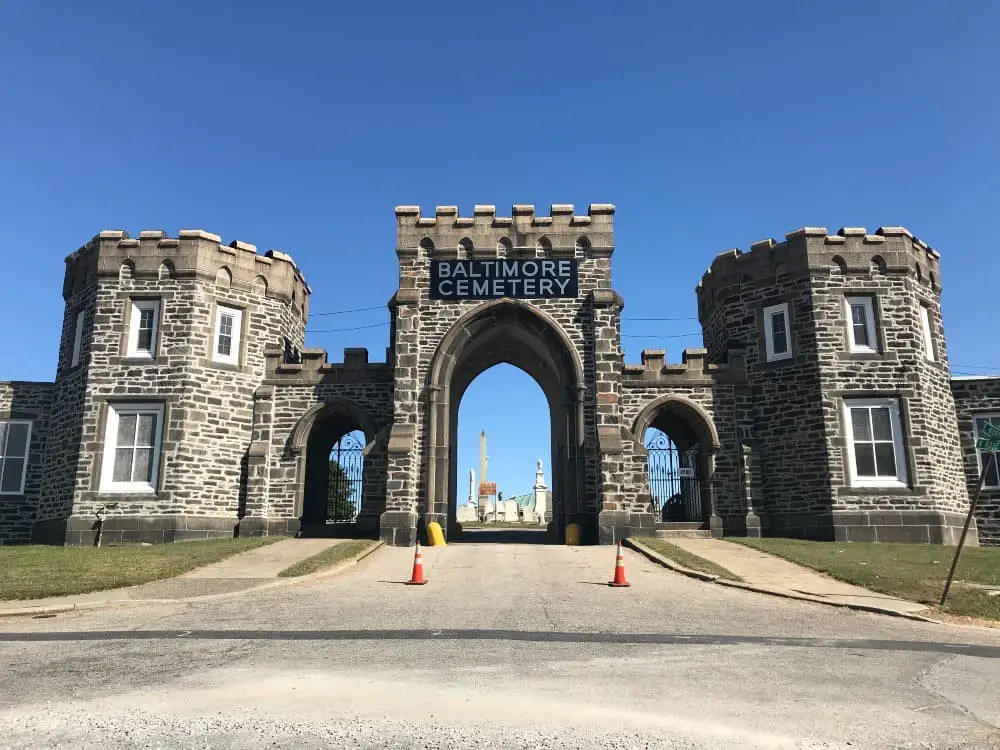
The Berea neighborhood, situated in West Baltimore, is demarcated by North Avenue to the north, Fremont Avenue to the south, Smallwood Street to the east, and Franklin Street to the west. This area is characterized by a significant presence of public housing developments, including the Lafayette Courts, Murphy Homes, and Gilmor Homes. The neighborhood’s population stands at around 4,000 residents. Notably, Berea is one of the most perilous neighborhoods in Baltimore.
In 2017 alone, a total of 21 homicides were reported within its boundaries, making it the second-highest number of homicides in any Baltimore neighborhood, surpassed only by Sandtown-Winchester’s 22 homicides. The homicide rate per 10,000 residents was a staggering 5.25, also ranking as the city’s second highest. The high crime rate in Berea can be attributed to several factors.
Firstly, the area is home to numerous public housing developments, which are often associated with increased criminal activity. Secondly, Berea struggles with poverty, with approximately 38% of residents living below the poverty line. Furthermore, the neighborhood is situated within West Baltimore, generally considered the most dangerous part of the city. These factors collectively contribute to the neighborhood’s concerning crime landscape.
Brooklyn-Curtis Bay
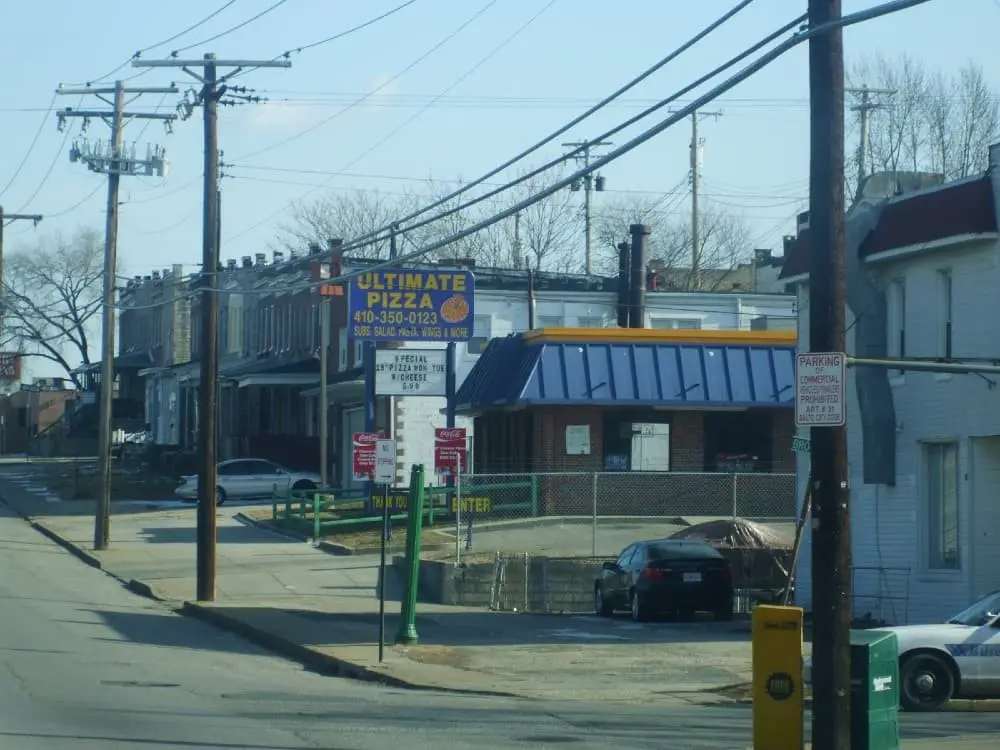
Baltimore’s Brooklyn-Curtis Bay neighborhood is notorious for its high crime rate and violent outbursts. The area has seen numerous shootings in recent years, leaving residents feeling uneasy about venturing out at night. In fact, the neighborhood’s precarious safety situation makes it a neighborhood to avoid if you’re seeking a peaceful living environment.
Cherry Hill
Dundalk Cityside

Nestled within the city limits of Baltimore, Maryland, Dundalk Cityside is a community beset by challenging social and economic conditions. Characterized by a high incidence of crime and poverty, this neighborhood has unfortunately become synonymous with violence, having witnessed a string of shootings and homicides in recent years.
Fairfield Area
The Fairfield Area, situated east of downtown Baltimore, north of Fells Point, and south of Johns Hopkins Hospital, is a neighborhood in Maryland, United States. Its boundaries are defined by Broadway to the west, Eastern Avenue to the north, Biddle Street to the south, and Aisquith Street to the east. The area has been home to public housing projects like Perkins Homes, O’Donnell Heights Homes, and Baltimore City Home for some time now.
Unfortunately, the Fairfield Area has a troubled past, marked by crime and violence. Over the years, drug activity and gang-related incidents have become more prevalent. In 2016, the area was even ranked among the most dangerous neighborhoods in Baltimore due to its high crime rate and presence of drug dealers and gangs.
Greater Rosemont
In Baltimore’s landscape, Greater Rosemont stands out as a neighborhood shrouded in controversy. Its reputation precedes it – a hotbed of criminal activity, with a crime rate that echoes its troubled past. The streets are often marred by violence and drug use, rendering it a perilous place to venture into. For those who call Greater Rosemont home, caution is the watchword as they navigate the dangers that lurk around every corner.
As a result, many residents opt for avoidance, choosing instead to steer clear of this troubled neighborhood. For those contemplating a visit or even relocation to Baltimore, it’s essential to have Greater Rosemont on your ‘avoid at all costs’ list.
Greenmount East
On the eastern side of Baltimore lies a cluster of neighborhoods notorious for their high crime rates. Among these, Greenmount East stands out as particularly perilous, with violent crime statistics that exceed the city’s average by a staggering fivefold margin. The area is marred by pervasive issues like drug addiction, gang activity, and poverty, rendering it an unsettling place to reside.
Grove Park
Grove Park, located in Baltimore’s northwestern quadrant, is demarcated by West North Avenue to the north, Pennsylvania Avenue to the south, Liberty Heights Avenue to the east, and Continental Street to the west. The 2010 census reported a population of 4,206 residents within this boundary. While Grove Park has its challenges, it is widely regarded as one of Baltimore’s most hazardous neighborhoods.
In 2015, the area saw a total of 11 homicides, ranking second only to Sandtown-Winchester/Harlem Park with 12 incidents. A year later, in 2016, the number of homicides decreased to nine. However, crime remains a pressing issue in Grove Park. According to 2016 statistics, there were 1,755 reported crimes within the neighborhood, comprising 196 violent and 1,559 property crimes. Notably, Grove Park’s crime rate far exceeds the citywide average.
Highlandtown
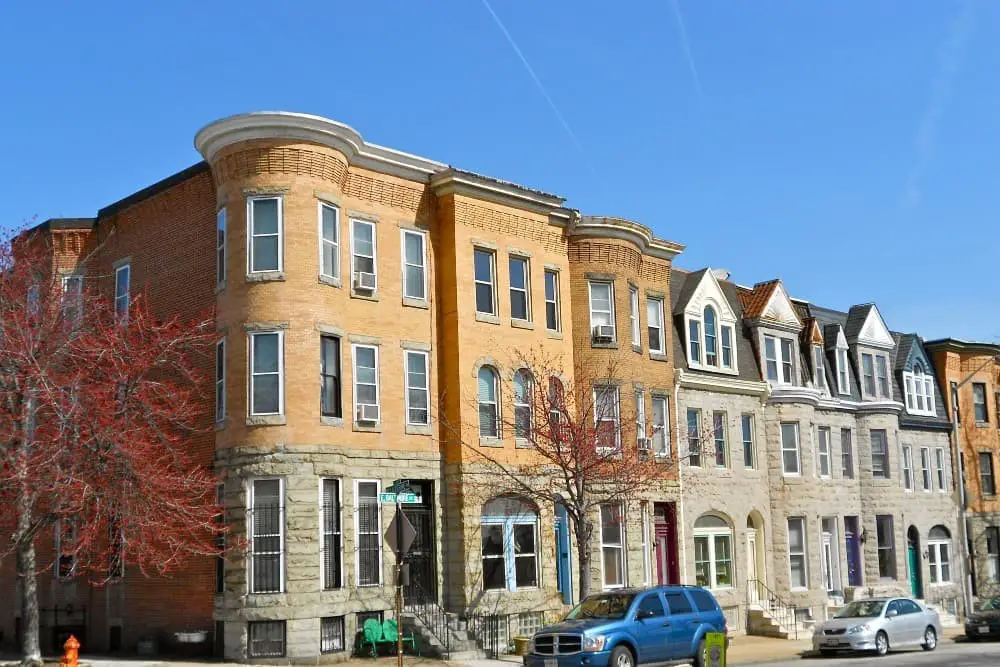
Located in Baltimore, Maryland, Highlandtown is a neighborhood that’s gained notoriety for its elevated crime rate. Dubbed one of the most treacherous areas in the city, it’s no wonder many residents and visitors alike are keenly aware of their surroundings when traversing this part of town.
While efforts have been made by the city to boost safety measures in recent years, the reality remains that Highlandtown continues to be a place where caution is paramount for those living and working within its boundaries.
Hopkins-Middle East
Located in eastern Baltimore, just north of picturesque Patterson Park, the Hopkins-Middle East neighborhood is defined by its boundaries – North Avenue to the south, Broadway to the west, and Interstate 95 to the east. Unfortunately, this area bears a grim distinction: it boasts the highest violent crime rate in the city, according to a University of Baltimore study. Furthermore, high rates of poverty and unemployment plague the community, presenting significant challenges for residents.
Madison-Eastend
In Baltimore’s Madison-Eastend neighborhood, the harsh reality of danger looms large. Crime rates and violence are alarmingly high, with numerous shootings and homicides in recent years leaving residents living in constant fear. The area has earned a notorious reputation, prompting many to exercise extreme caution when venturing out at night, if not altogether avoiding it.
Monument Street Area
Baltimore’s Monument Street Area stands out as one of its most treacherous neighborhoods, boasting a crime rate starkly contrasting with the national average. This hazardous environment is further exacerbated by the prevalence of abandoned structures and vacant lots, often serving as magnets for illicit activities.
Morrell Park.
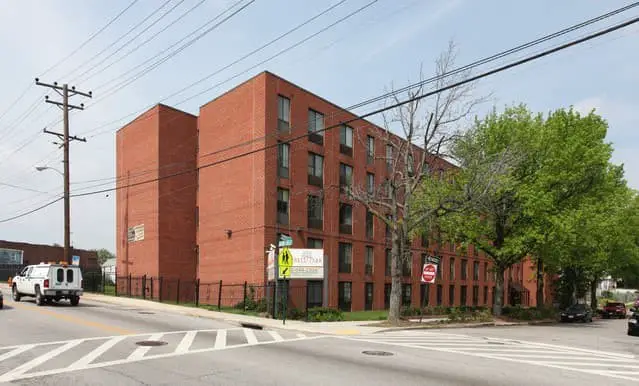
Located in Baltimore, Maryland, Morrell Park is a neighborhood shrouded in controversy, earning the dubious distinction as one of the city’s most treacherous areas. A trifecta of woes – rampant crime, scarce resources, and crippling addiction – has residents living on edge, daily struggles including encounters with drug dealers, gang activity, and violent confrontations. The opioid crisis has particularly taken its toll, leaving many residents mired in a vicious cycle of dependency.
Furthermore, the dearth of employment opportunities and affordable housing perpetuates a cycle of poverty and crime.
Orangeville
Orangeville, a neighborhood situated in northwest Baltimore, Maryland, is flanked by West North Avenue to the east, Edmondson Avenue to the south, and Rolling Road to the north. This area has garnered attention for its high crime rate, earning it a spot among the most dangerous neighborhoods in Baltimore.
According to 2017 statistics, Orangeville reported an astonishing 1,752 crimes, translating to a staggering crime rate of 19.4 per 1,000 residents.
Notably, this figure far surpasses the city’s average crime rate of 11.1 per 1,000 residents, highlighting the pressing need for effective crime mitigation strategies in Orangeville.
Pulaski
In the heart of Baltimore lies the notorious Pulaski neighborhood, a hotbed of criminal activity that has left residents living in constant fear of violence. The area’s alarming crime rate has been punctuated by multiple shooting incidents in recent years, casting a dark shadow over daily life. As a result, many local businesses have shuttered their doors due to the lack of foot traffic and an unenviable vacancy rate.
Demographically, Pulaski is predominantly African American, with a median household income that hovers precariously below the poverty line. The neighborhood’s 4,000 residents face the harsh realities of life in this West Baltimore community.
West Baltimore
The West Baltimore neighborhood has faced significant challenges due to high levels of abandonment and economic stagnation, leading to elevated crime rates and a reputation as one of the city’s most perilous areas. As such, visitors or potential residents should take enhanced safety measures when exploring or settling in this part of town.
The area’s struggles with poverty and crime have been particularly pronounced in recent years, earning it a spot among Baltimore’s most treacherous neighborhoods.
26 Best Neighborhoods in Baltimore
Beechfield
The Beechfield neighborhood, situated in southwest Baltimore, boasts a predominantly African American community, comprising approximately 3,000 residents. The median household income stands at $37,000, while the median home value is pegged at $105,000. Despite a crime rate slightly higher than the national average, Beechfield remains a safe and welcoming neighborhood where many residents have roots that stretch back generations.
This close-knit community is further distinguished by its array of parks and recreation centers, diverse businesses, and restaurants. With affordable living options and easy access to Baltimore’s wider metropolitan area, Beechfield presents an attractive choice for those seeking a convenient urban lifestyle.
Bolton Hill
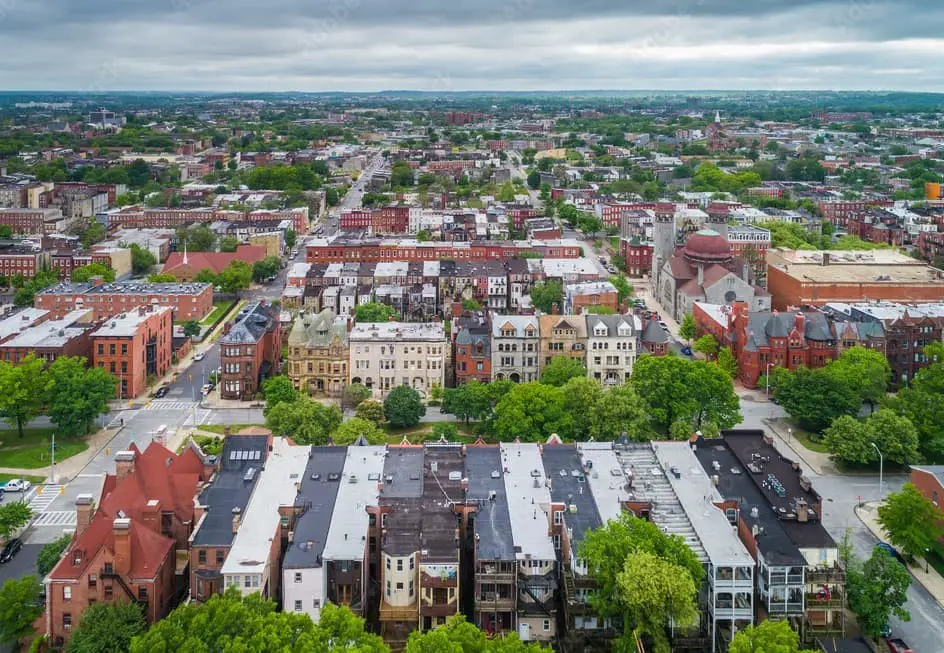
Located in central Baltimore, Maryland, United States, Bolton Hill is a historic neighborhood with a rich cultural heritage. The neighborhood’s diverse landscape is marked by the presence of two city parks and numerous notable buildings listed on the National Register of Historic Places. According to the 2000 census, Bolton Hill was home to approximately 5,444 residents living in 2,316 households, with a median household income of $37,521.
The neighborhood’s demographic makeup is characterized by racial and socioeconomic diversity, with 42% of residents identifying as white, 33% as black, and 18% as Latino. Additionally, 16% of residents live below the poverty line, while 14% have earned a bachelor’s degree or higher. This unique blend of cultures and backgrounds has contributed to Bolton Hill’s reputation as one of Baltimore’s most stable and architecturally rich neighborhoods.
The neighborhood is also home to many students from the Maryland Institute College of Art (MICA), who are drawn to its proximity to campus.
Notable features of Bolton Hill include the George Peabody Library, part of Johns Hopkins University’s Sheridan Libraries, the Maryland Institute College of Art, the Eubie Blake National Jazz Institute and Cultural Center, the Lyric Opera House, the Bolton Hill Nursery School, Union Memorial Hospital, Mount Royal Tavern, a historic bar frequented by writers and artists, and The Mainstay, a music venue that features folk, bluegrass, and Americana music.
Brooklyn
Baltimore’s Brooklyn neighborhood boasts an unbeatable combination of convenience and charm, making it an attractive choice for those seeking a new home. Strategically located near the city center, this vibrant community offers unparalleled accessibility to downtown amenities, shopping, dining, parks, and recreational activities. The area’s affordable housing options and strong sense of community further solidify its appeal as a great place to call home.
Whether you’re looking for a quiet retreat or an urban oasis, Brooklyn has something for everyone.
Canton

Canton, one of Baltimore’s crown jewels, boasts a storied past and a vibrant community. This eclectic neighborhood is a melting pot of cultures, cuisines, and entertainment options. From renowned restaurants to trendy bars and unique shops, Canton has everything you need to make your life in Baltimore truly exceptional. If you’re searching for the perfect place to call home, Canton should definitely be on your radar.
Of course, like any urban neighborhood, Canton comes with its own set of challenges. The streets can be busy and noisy, and crime rates are a concern. However, it’s essential to remember that while Canton may not be the safest neighborhood in Baltimore, it’s also far from being the most dangerous. With the right mindset and precautions, you’ll find that Canton has plenty to offer, including a unique charm and character that sets it apart from other neighborhoods.
So if you’re up for the urban experience, Canton is an excellent choice. With its rich history, cultural diversity, and endless opportunities for entertainment and exploration, you’re sure to find something about this neighborhood that speaks to your soul.
Central Park Heights
Located in northwest Baltimore, Maryland, Central Park Heights is a thriving neighborhood that boasts a population of around 7,000 residents. The neighborhood’s boundaries are defined by West North Avenue to the north, Druid Hill Park to the east, Liberty Heights Avenue to the south, and Frederick Road to the west.
One of the greatest advantages of calling Central Park Heights home is its exceptional safety record, with a low crime rate that makes it an attractive option for families and individuals alike. Furthermore, the neighborhood offers easy access to a wide range of amenities and attractions, making it a great place to live, work, and play.
Moreover, Central Park Heights is proud to be home to several top-notch educational institutions, making it an ideal location for those looking to start or continue their family’s educational journey.
Charles Village
Charles Village, a charming neighborhood nestled in north Baltimore, boasts an array of characteristics that make it one of the city’s most sought-after areas. The picturesque rowhomes, steeped in history, are just one aspect that sets Charles Village apart. Its proximity to Johns Hopkins University is another major draw, offering residents easy access to higher education and medical facilities.
Beyond its academic appeal, Charles Village is also home to a vibrant tapestry of small businesses, including eclectic eateries and cozy cafes. With these advantages in mind, it’s little wonder that Charles Village has earned its reputation as one of Baltimore’s best neighborhoods. The area’s exemplary safety record, coupled with the availability of top-notch schools – both public and private – further solidify its status as a desirable place to call home.
Last but not least, the neighborhood’s quality of life is unmatched, offering an abundance of activities and attractions that cater to a wide range of interests.
Cross Keys
Located just north of Baltimore’s downtown business district and east of the Inner Harbor, Cross Keys is a vibrant neighborhood that offers a unique blend of businesses, cultural attractions, and events. The area has become a popular destination for both residents and visitors seeking a convenient and exciting experience. One of the primary reasons to visit Cross Keys is its diverse range of offerings.
From shopping at the Cross Keys Shopping Center, which features a mix of stores, including a grocery store, pharmacy, and clothing shop, to exploring the Maryland Zoo or National Aquarium, there’s something for everyone. The neighborhood is also home to various events throughout the year, making it an excellent choice for those looking to experience Baltimore beyond its iconic Inner Harbor.
Downtown Baltimore
Downtown Baltimore, Maryland, serves as the epicenter of commerce and activity in the city. This vibrant district is marked by a collection of iconic skyscrapers that dominate the skyline. Within its boundaries lies the Inner Harbor neighborhood, a beloved tourist hub featuring an array of hotels, restaurants, and attractions like the National Aquarium and Oriole Park at Camden Yards.
For those seeking an urban lifestyle that offers equal parts excitement and diversity, downtown Baltimore is the ideal location to call home.
Edmondson Village
Edmondson Village, a neighborhood in Baltimore, Maryland, stands out as a desirable place to call home. Its unique charm stems from the blend of affordability, quality education, and strong sense of community that permeates the area. Additionally, residents can rest assured about their safety and convenience, thanks to the proximity to public transportation options.
Federal Hill
Baltimore boasts an array of neighborhoods that cater to diverse tastes and preferences. Among the city’s most charming enclaves is Federal Hill, situated just south of downtown. This storied neighborhood is celebrated for its breathtaking vistas of the Inner Harbor, a picturesque backdrop for strolling or simply taking in the views. Visitors and residents alike can enjoy an eclectic mix of eateries, bars, and specialty shops that dot the neighborhood’s charming streets.
For those seeking a place to call home, Federal Hill offers a range of apartments and houses that blend modern convenience with historic charm.
Fells Point
Baltimore’s Fells Point, a National Historic Landmark District, boasts a rich maritime heritage, with its waterfront along the Inner Harbor serving as a testament to its storied past. Once a hub for shipyards and immigrant communities, the neighborhood has evolved into a vibrant blend of shopping, dining, nightlife, and cultural experiences.
Greenspring
Situated in northern Baltimore, Maryland, the Greenspring neighborhood boasts a predominantly residential landscape, with approximately 8,000 residents calling it home. Characterized by its highly educated populace – a staggering 60% of whom hold a bachelor’s degree or higher – Greenspring is an area where intellect and opportunity thrive.
With a median household income of $85,000 and median home value reaching $275,000, this neighborhood is undoubtedly one of Baltimore’s most desirable addresses. The community is renowned for its safety, as well as the plethora of activities and attractions on offer. Moreover, Greenspring is home to numerous excellent schools, providing families with a range of educational options.
Hampden
Baltimore’s Hampden neighborhood thrives in its northern section, characterized by a unique blend of lively ambiance and eclectic mix of shops and eateries. This historic area boasts several notable landmarks, such as the iconic Roland Water Tower and the former residence of renowned writer H. L. Mencken. One of Hampden’s greatest draws is its ability to cater to those seeking a vibrant lifestyle.
The neighborhood’s diverse array of establishments offers something for everyone, from shopping and dining to exploring historical treasures. Furthermore, Hampden’s strategic location allows residents and visitors alike to easily access some of Baltimore’s most popular attractions, including the picturesque Inner Harbor and the iconic Camden Yards.
Harbor East
Located on the waterfront in Baltimore, Maryland, Harbor East is a thriving mixed-use community that seamlessly blends residential and commercial spaces with parks and green areas. This charming neighborhood is situated just east of the Inner Harbor and north of Fells Point, making it an ideal location for both locals and visitors.
With its rich history dating back to the early 19th century, when it was first developed as a port and industrial center, Harbor East has undergone several transformations over the years. The Great Baltimore Fire of 1904 led to a rebuilding of the neighborhood as a residential and commercial district, while the late 20th century saw the construction of new office towers, hotels, and shopping centers.
Today, visitors can enjoy some of Baltimore’s most popular attractions, including the National Aquarium, Maryland Science Center, Port Discovery Children’s Museum, and the American Visionary Art Museum. The neighborhood also boasts a variety of shops, restaurants, and nightlife venues, making it an excellent destination for those looking to experience the best of what Baltimore has to offer.
Inner Harbor
Located at the heart of Baltimore’s vibrant cityscape, the Inner Harbor neighborhood offers an unparalleled blend of convenience and charm. Its proximity to downtown Baltimore provides easy access to top attractions, while its waterfront views of the harbor offer a serene escape from the hustle and bustle. Moreover, this coveted neighborhood is renowned for its exceptional dining scene, boasting some of the best restaurants in the city.
For those seeking a desirable living destination that’s within arm’s reach of all the action, Inner Harbor is an ideal choice.
Locust Point
Located in southern Baltimore, Maryland, Locust Point is a community-driven neighborhood that prides itself on its tight-knit relationships between residents. This charming area is also home to a variety of local businesses, offering plenty of opportunities for shopping and dining experiences. With easy access to major highways, getting around the city from Locust Point is a breeze.
Midtown & Mount Vernon
Located at the very heart of Baltimore, Maryland, Midtown & Mount Vernon is a storied neighborhood that embodies the city’s rich history and cultural diversity. This vibrant community is characterized by its eclectic mix of housing types, from cozy apartments to charming single-family homes, which cater to a wide range of lifestyles and budgets.
Beyond its residential charm, Midtown & Mount Vernon boasts an array of culinary delights, with a variety of restaurants, bars, and eateries serving up everything from classic American fare to international cuisine. Moreover, the neighborhood’s proximity to some of Baltimore’s most iconic attractions – including the picturesque Inner Harbor and the famous Camden Yards – makes it an ideal location for those who crave urban excitement and convenience.
Mid-town Belvedere
Midtown Belvedere stands out as one of Baltimore’s most desirable neighborhoods, boasting an unbeatable location mere blocks from downtown. This charming area is teeming with entrepreneurial spirit, featuring a vibrant array of businesses, eateries, and cultural hotspots that cater to the diverse tastes of its residents. Moreover, the proximity to several lush parks makes it an ideal haven for families and outdoor enthusiasts alike.
Notably, Midtown Belvedere prides itself on its exceptional safety record, with a low crime rate that instills confidence in its community. Furthermore, the neighborhood’s affordability is a major draw for those considering a move to Baltimore, offering an attractive balance of quality of life and budget-friendliness.
Parkville
For those seeking a ideal living space in Baltimore, Parkville is an outstanding option that offers everything necessary for a comfortable and enjoyable life. This neighborhood boasts an array of shops, restaurants, and amenities, which provide endless opportunities for entertainment, socialization, and personal growth. Moreover, the community in Parkville is renowned for its warmth and hospitality, making it easy to feel at home.
Residents often praise the neighborhood’s welcoming atmosphere, which fosters a sense of belonging among its inhabitants.
Patterson Park
Patterson Park, a public green space in Baltimore, Maryland, has a rich history dating back to 1827 when it was inaugurated as the city’s first major park project. Initially smaller than its current size, the original park was bounded by East Baltimore Street, Guilford Avenue, Patterson Street, and Broadway. Over time, the park has undergone several expansions and updates. In 1860, the city purchased an additional 12 acres of land to the east of Guilford Avenue, doubling the park’s size.
Further expansion occurred in 1873 when five more acres were added north of East Baltimore Street. The most recent major restoration took place in 1988-89. Today, Patterson Park is a vibrant destination featuring a range of attractions and amenities. Visitors can enjoy playgrounds, athletic fields, a swimming pool, an amphitheater, and several historic monuments. The park also hosts various community events throughout the year, including Easter Egg Hunts, Halloween Festivals, and Winterfests.
One of the park’s most iconic features is its octagonal pagoda, built in 1891. This unique structure offers stunning views of downtown Baltimore and the harbor, making it a popular spot for picnics and relaxation. The Friends of Patterson Park, a non-profit organization, works to preserve and enhance the park’s amenities and hosts free exercise classes, including yoga and Pilates.
Reservoir Hill
Nestled in the heart of Baltimore, Reservoir Hill is an exceptional neighborhood that seamlessly blends residential, commercial, and recreational activities. Its tranquil atmosphere, coupled with a strong sense of community, makes it an ideal place to call home. The area boasts a reputation for being safe, clean, and well-maintained, providing residents with a comfortable and secure environment to live, work, and socialize.
Roland Park
Baltimore’s Roland Park is a historic and affluent neighborhood that boasts a unique charm. With a population of around 7,000, this predominantly white, upper-middle-class community is characterized by its excellent public schools, safe streets, and stunning architecture. The median household income in Roland Park exceeds $100,000, while the median home value is nearly $700,000, making it one of the most desirable neighborhoods in Baltimore.
Beyond its impressive housing stock, Roland Park is also notable for its beautiful parks and recreation areas, including the iconic Roland Water Tower Park and the Maryland Zoo, providing residents with a range of outdoor activities and amenities.
South Baltimore
South Baltimore, often referred to as “SoBo,” is an urban neighborhood in Baltimore, Maryland, that encompasses the city’s Inner Harbor and Fell’s Point. This dynamic area is characterized by its diverse array of businesses, attractions, and entertainment options. The National Aquarium, Maryland Science Center, and Camden Yards are just a few of the notable landmarks found here.
When it comes to nightlife and dining, South Baltimore truly shines, offering a wide range of bars, restaurants, and clubs to suit every taste. For those considering making this neighborhood their home, it’s worth noting that South Baltimore is also home to some excellent schools, making it an attractive option for families and professionals alike.
Towson
Towson, an unincorporated community and census-designated place in Baltimore County, Maryland, has a rich history dating back to the 17th century. As the county seat and second-most populous unincorporated county seat in the United States, it is home to a population of approximately 55,197 individuals, according to the 2010 census. Located within the Baltimore metropolitan area, Towson is also the site of Towson University.
The community has undergone significant transformations over the years, from its early days as an agricultural hub to its current status as a thriving suburban commuter town. One of the earliest settlers in present-day Towson was Edward Dorsey, who arrived on the scene in 1661. The land he settled on was part of a large tract inherited by Cecili Calvert, the wife of Charles Calvert, 3rd Baron Baltimore.
Although known as ‘Towsontown’ for many years, the community’s post office, established in 1854, eventually changed its name to Towson in 1871. There have been various theories regarding the origin of the town’s name, with some suggesting it was named after a popular tavern located near the original town center, while others propose it may have been named after William Townsend or even the American Revolutionary War hero, Towser.
A third theory suggests that the name ‘Towson’ derives from ‘Towson’s Stone’, a large glacial erratic boulder deposited during the last Ice Age near present-day Towson. Historically, Towson was an agricultural community with some of the best farmland in Baltimore County. Today, visitors can still explore historic Hampton Mansion, a working farm located on Hampton Lane just off York Road. The mansion has been preserved and is now open to the public for tours.
Other significant landmarks from this period include the Oakleigh complex, which features three mansions built in the 1850s for three daughters of the same family. When Baltimore County established public schools in 1837, Towson became home to its first elementary school, later converted into a middle school. The oldest remaining public school building in Baltimore County now houses administrative offices for the county government.
In 1869, the Baltimore and Susquehanna Railroad built a station at York Road and Chesapeake Avenue, marking the beginning of Towson’s growth as a suburban commuter town. The first suburb, Roland Park, was developed beginning in 1890. Since the late 20th century, downtown Towson has undergone significant redevelopment projects such as the Towson Commons (opened in 1991), the Towson Circle (completed in 2003), and the Towson Town Center (opened in 2007).
Washington Village (Pigtown)
Pigtown, a historic Baltimore neighborhood, has undergone a remarkable transformation over the centuries. Established in the 17th century by English and Welsh settlers, the area gradually welcomed German and Irish immigrants in the 18th century. By the 19th century, Pigtown had evolved into a predominantly working-class community. However, it declined in the early 20th century before experiencing a revitalization since the late 1990s.
Situated just south of downtown Baltimore, Pigtown is bordered by Martin Luther King Boulevard to the north, Washington Boulevard to the south, Fulton Avenue to the east, and Poppleton Street to the west, making it adjacent to Union Square, Barre Circle, and Hollins Market. Today, Pigtown is a melting pot of cultures, boasting a mix of residential and commercial properties.
The neighborhood is home to numerous small businesses, including restaurants, bars, and shops, as well as parks and playgrounds for residents to enjoy. Washington Village serves as the main commercial hub in Pigtown, featuring historic landmarks such as the Washington Monument and the B&O Railroad Museum. Pigtown offers a unique blend of diversity, vibrancy, and community charm, making it an attractive option for those seeking a dynamic place to call home in Baltimore.
With its rich history, small businesses, parks, and cultural attractions, Pigtown has something for everyone.
Woodberry
Nestled just north of Baltimore’s city center, between North Avenue and the picturesque Druid Hill Park, lies the charming neighborhood of Woodberry. This desirable community is characterized by its stunning Victorian-style homes, a thriving art scene, and a vibrant nightlife that pulsates with energy. Additionally, Woodberry boasts an impressive array of well-regarded schools, making it an attractive option for families seeking a safe and welcoming environment to raise their children.
For those in search of a neighborhood that embodies the perfect blend of history, culture, and convenience, Woodberry is undoubtedly a community worth exploring.
Conclusion
Baltimore’s diverse neighborhoods each possess unique characteristics that make them appealing to different types of residents. For those seeking safe and affordable options, Canton, Fells Point, and Federal Hill are excellent choices. Upscale living can be found in Roland Park or Mount Vernon, while history buffs may prefer Bolton Hill or Hampden. Ultimately, Baltimore’s plethora of neighborhoods ensures that there’s a perfect fit for every individual.
With so many options to explore, it’s easy to get started on your discovery of this great city.
Related Posts
Japanese street food has undergone a remarkable transformation from traditional market fare to gourmet experiences. Meanwhile, exploring comfort on a budget can be achieved with affordable hotels near popular destinations like Shelby Farms Park. In Belarus, Minsk offers a fascinating blend of history and culture. For tourists in San Francisco, furnished apartments provide a unique way to experience the city’s iconic attractions.
In Thailand, travelers can indulge in delicious and easy-to-prepare foods, while in San Antonio, the aquarium offers an exciting array of activities.

